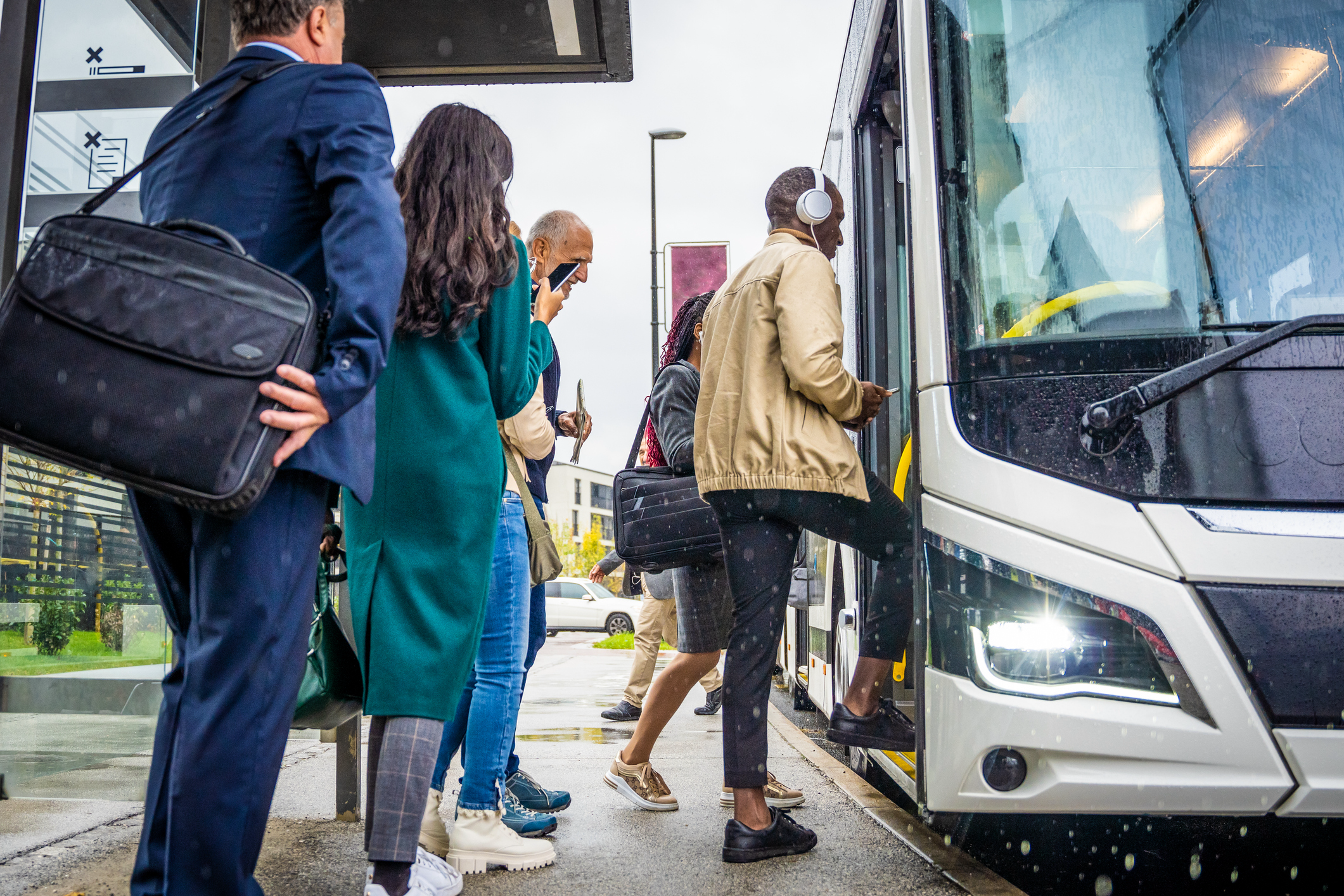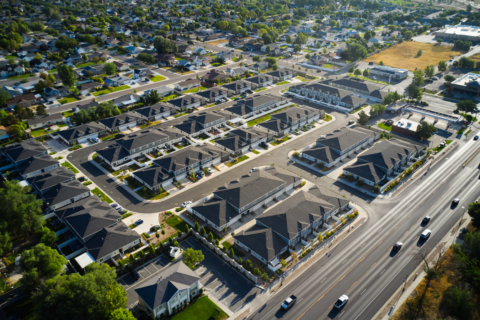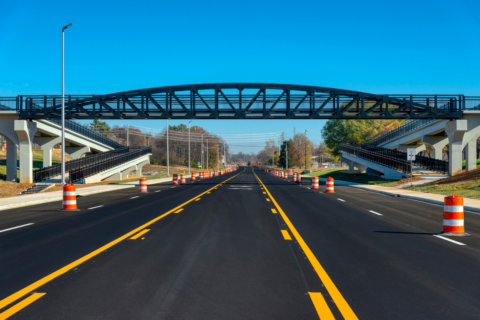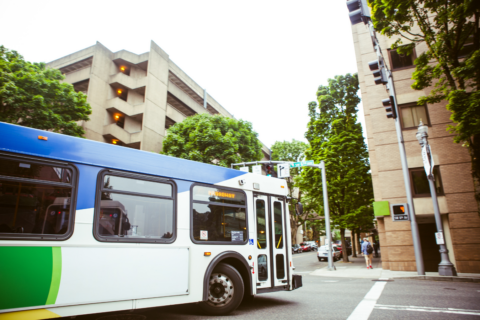As municipalities continue to revisit their housing codes and permitting structures to increase the supply of housing, they should be doing so with mobility solutions in mind. Regardless of where people live — big city or small town, urban, suburban or rural — traveling to a job, a medical appointment, an entertainment area or an educational institution, residents need reliable transportation alternatives other than a personal automobile. Investments by municipalities to plan strategically and coordinate both their housing and transportation offerings will achieve better longer-term results.
Typically, rent or a mortgage accounts for the largest expenditure in a household budget, followed by transportation. A dataset, The Housing and Transportation Affordability Index, gathered from the Center for Neighborhood Technology, includes both the cost of housing and transportation at the Block Group level. Looking at the typical housing affordability cost, slightly more than 55 percent of neighborhoods in the country are affordable. When transportation costs are included along with housing costs, that number drops to 26 percent or 59,768 neighborhoods across the U.S.
Federal resources are currently available as municipalities think about linking their housing and transportation projects. One federal initiative is Transit-Oriented Development (TOD), which in Fiscal Year 2023 funding is awarding $13.4 million in competitive grants. TOD applications for 2023 which focused on affordable housing may have received up to 100 percent of funding for their projects. For more on transit-oriented development grants, see NLC’s blog on this topic.
The Reconnecting Communities and Neighborhoods (RCN) program combines funds from the Reconnecting Communities Pilot (RCP) and the one-time funded Neighborhood Access and Equity grants (NAE). The Notice of Funding Opportunity (NOFO) for RCN in 2023 made available $3.16 billion for municipalities to connect neighborhoods separated from economic opportunities and services by a physical barrier (such as an elevated highway). The first round of RCP funding awarded $185 million to 45 projects. While the large amount of RCN funding is likely limited to one fiscal year, the RCP program will continue to have several more rounds of funding through the Bipartisan Infrastructure Law (BIL).
How Municipalities Are Connecting Housing and Transportation
Grand Rapids, MI, won a $696,000 Transit-Oriented Development Planning grant in 2018. The grant was used to study housing and employment market conditions along the 9.6-mile Silver Line, the Bus Rapid Transit (BRT) line in the city. This BRT line connects the Medical Mile, downtown and southern neighborhoods of the city which has the greatest population density and most public-transit dependent residents. Along with financing the market conditions study, funds were used to integrate land use and transportation planning projects. Grants provided support for transit ridership, multimodal connectivity and mixed-used development near the Silver Line bus stops.
The City of Wichita, KS, won a one-million-dollar RCP grant to study reconnecting portions of the 21st Street corridor that is divided by several at-grade railroad crossings and a sunken interstate highway. With multiple rail crossings, residents often wait up to 90 minutes for the trains to unblock the road, often causing drivers to avoid the area. The barriers along the corridor also separate a predominantly Hispanic community and a predominantly Black community from easily traveling to other areas of the city. The study will explore the introduction of an east-west transit line, bike/pedestrian pathways, including sidewalks, solutions for persons with disabilities, and safety features throughout the corridor. The project scope plans to include placemaking elements that showcase local history and culture via art installations, green spaces, and recreation areas. Creating stronger links along the corridor will connect residents to amenities such as grocery stores, medical facilities, after-school programs and educational opportunities such as Wichita State University.
Some cities, like Chicago, IL, and Austin, TX, are using Equitable Transit-Oriented Development (ETOD) policies to ensure that TOD is affordable to lower-income residents, accessible for people with disabilities and does not lead to displacement. Chicago’s ETOD policy plan is coupled with its Connected Communities Ordinance, which is intended to create the zoning changes needed to create TOD that supports economic development and equitable access to jobs. Chicago received $800,000 grant from Federal Transit Administration’s Pilot Program for Transit-Oriented Development Planning Program to complete a comprehensive ETOD planning study for the 95th Street Corridor. Austin won $900,000 in funding from the same grant program for its Project Connect ETOD work. The funding will be used to plan for TOD along two light rail lines and a proposed regional rail line and pilot the city’s plans to bolster community development through mixed-use development, affordable housing, bike/pedestrian access and everyday amenities.
Where to Begin
As municipalities work to address both housing and transportation affordability, they should not look to tackle both in a vacuum. Local leaders can work through the following steps to bring the two policy areas closer together to bring benefits to their residents:
- Convene the array of stakeholders for housing and transportation to identify potential opportunities to link the two policy areas and identify affordability pain points. Working with affordable housing advocates and community-based organizations helps minimize displacement, create buy-in and create spaces that meet the needs and desires of all residents;
- Gather any necessary data — local leaders can use the Housing and Transportation Affordability Index or the U.S. Department of Transportation’s Equitable Transportation Community (ETC) Explore to start;
- Align local, regional and state plans to ensure affordability is maximized instead of duplicated. State and federal funding often requires local plans to be in regional or state plans;
- Identify any federal or state funding to advance local projects. To see how municipalities are utilizing federal funding read NLC’s Rebuilding America Dashboard and the Local Government ARPA Investment Tracker.











